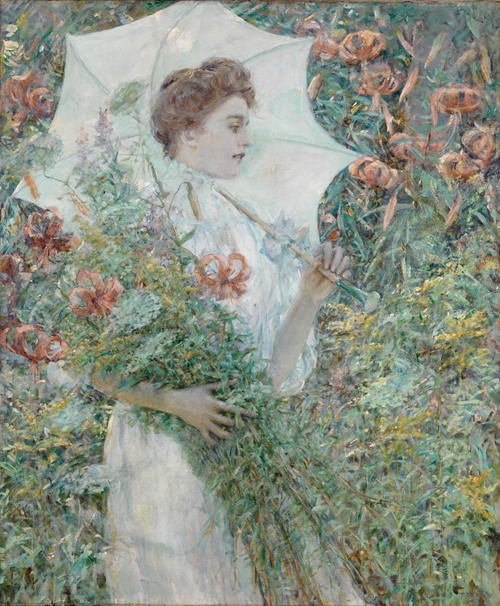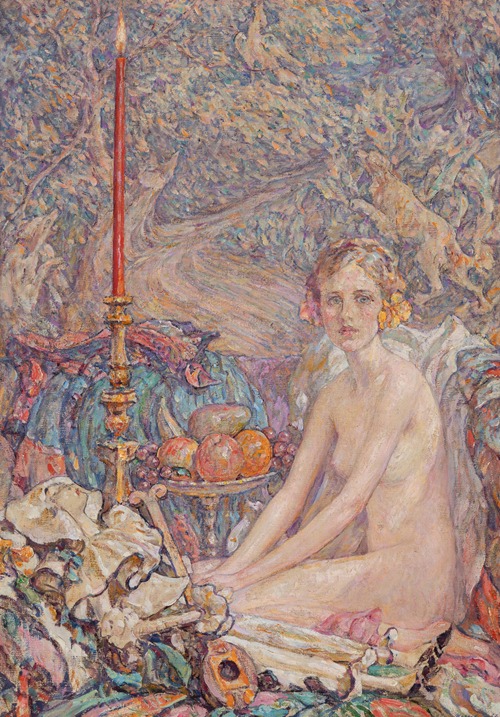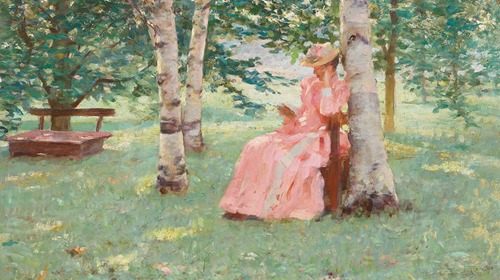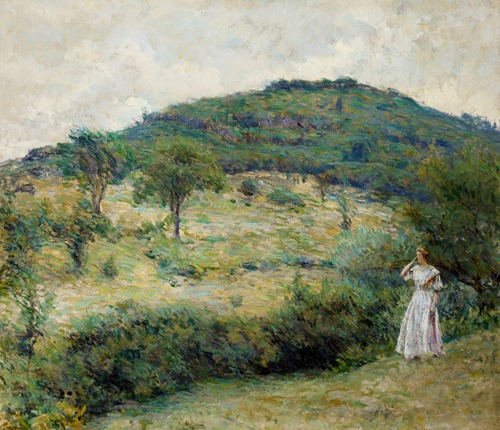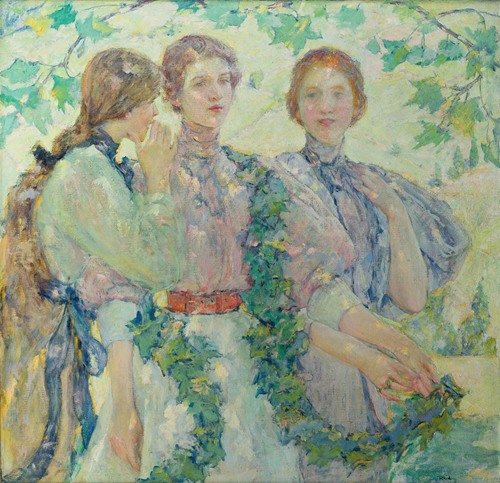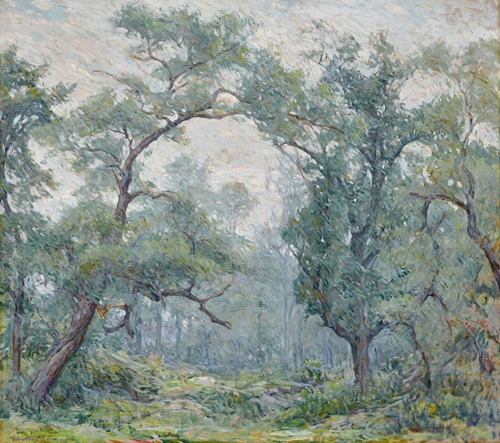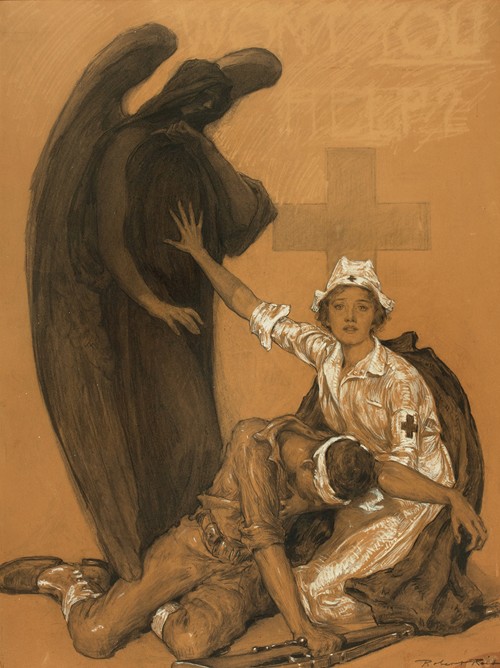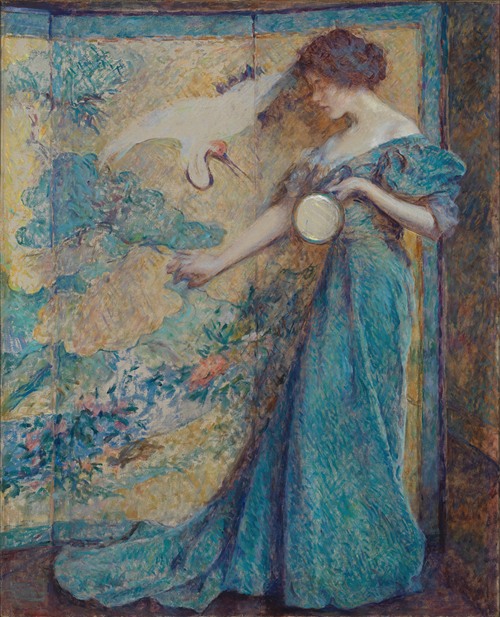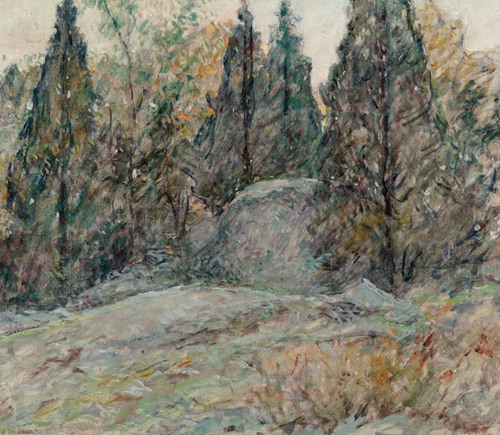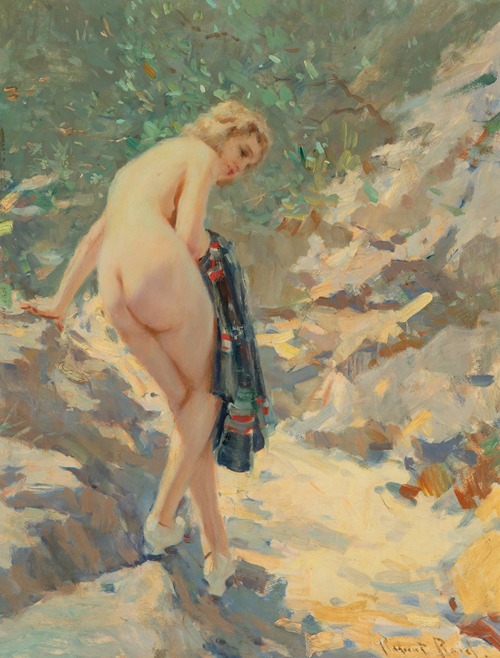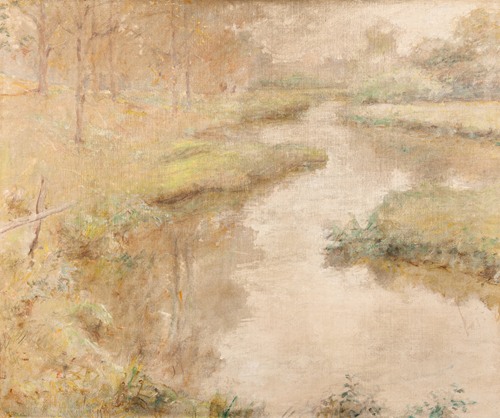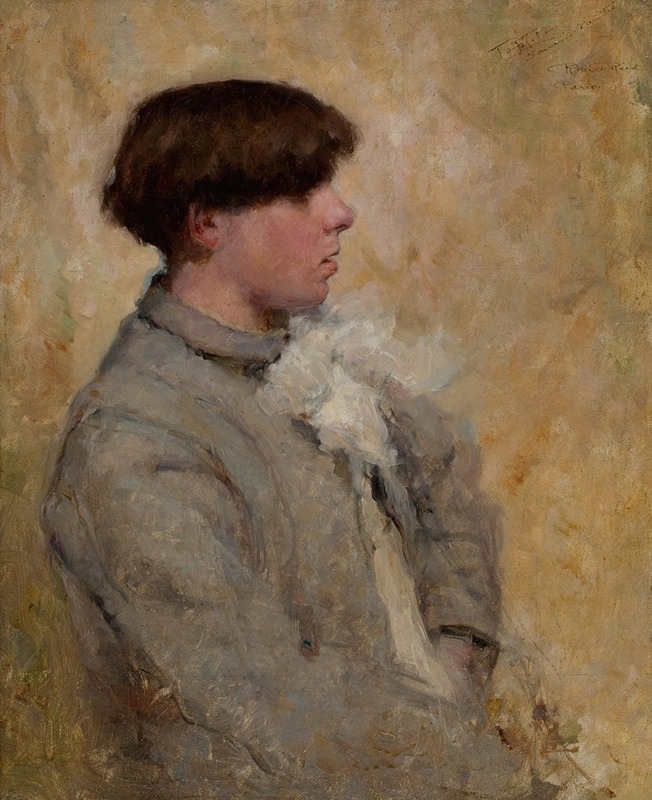
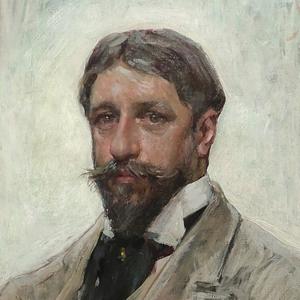
Robert Lewis Reid was an American Impressionist painter and muralist. His work tended to be very decorative, much of it centered on depiction of young women set among flowers. He later became known for his murals and designs in stained glass.
Robert Reid was born in Stockbridge, Massachusetts and attended the School of the Museum of Fine Arts, Boston under Otto Grundmann, where he was later an instructor. In 1884 he moved to New York City, studying at the Art Students League, and in 1885 he went to Paris to study at the Académie Julian under Gustave Boulanger and Jules Joseph Lefebvre. His early pictures were figures of French peasants, painted at Étaples.
Upon returning to New York in 1889, he worked as a portraitist and later became an instructor at the Art Students League and Cooper Union.
He painted three murals for the Manufactures Building at the 1893 World's Columbian Exposition in Chicago, and exhibited four paintings in its Fine Arts Building. His work, including the tragic Her First Born (1888), was awarded a medal for excellence.
Reid was a member of the Ten American Painters, who seceded from the Society of American Artists in 1897. His painting Dawn was awarded the 1898 First Hallgarten Prize by the National Academy of Design.
Reid worked on several mural projects around the turn of the century. When he returned to paintings, around 1905, his work was more naturalistic, and his palette tended toward soft pastels.
In 1906 Reid completed a series of ten stained glass windows depicting the Life of Christ for the Unitarian Memorial Church in Fairhaven, Massachusetts. For the Church of St. Paul the Apostle in New York City, he created The Martyrdom of St. Paul Window, located at the southwestern end of the nave.
The National Academy of Design elected Reid an Associate member in 1904, and an Academician in 1906.
Reid also taught; among his pupils was Nan Sheets.
Reid died in Clifton Springs, New York.
